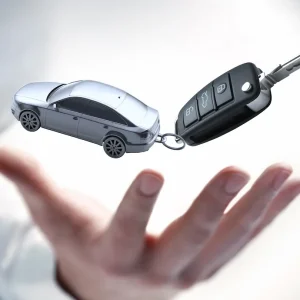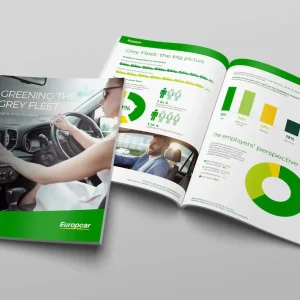
To improve sustainability, reduce emissions and reach net zero targets, many fleet operators are looking to make the switch to EVs.
However, despite plug-in vehicle now accounting for 3.1% of the UK’s car parc, rising by more than 50% over the last year, a complete switch to EVs isn’t necessarily an easy option for every fleet. For example, LCV fleets may find it much more difficult to transition. For those fleet operators, they should consider other ways to make their fleet more sustainable in the short-term.
Small changes with a big environmental impact for fleets
While working towards a full EV transition, fleet operators can explore other avenues for reducing vehicle emissions to decrease the fleet’s overall carbon footprint. These include:
- Ensuring regular servicing
One easy way to reduce fleet emissions is ensuring vehicles are serviced regularly. Frequent services will ensure timely oil changes, which helps the engine run smoothly and reduces emissions. It will also ensure the air filter is working as efficiently and effectively as possible. This maintains optimal airflow to the engine, preventing a range of issues caused by dust, debris and pollen build-up. If not managed properly, this can contribute to wear and tear of the engine that can increase emissions. As part of this, fleet operators should also ensure tyre pressures are checked regularly, as under-inflated tyres can reduce overall fuel efficiency by up to 10%.
- Avoid vehicle idling
Vehicle idling (leaving a vehicle’s engine running while it’s stationary) is a significant cause of air pollution. In fact, engine idling can produce up to twice the amount of emissions as an engine in motion. To address this, fleet operators should prioritise vehicles with start-stop technology where possible. Work can also be done to educate drivers on the impact and consequences of idling to reduce its effect on fleet emissions. Vehicle idling can be easily monitored using telematics technology, which is relatively commonplace in today’s commercial vehicle fleets.
- Tackling driver habits and behaviours
Improving driver habits and behaviours can also help to improve fuel efficiency, and driver education and training has a key role to play here. There are some simple changes that can improve fuel economy and reduce vehicle emissions, including avoiding harsh braking and accelerating, not rushing through gears, not using excessive speed, and reducing mileage through forward journey planning. Some in-vehicle telematics devices can help to offer drivers real-time feedback to improve driving style and further reduce emissions as a result.
Planning a smooth EV transition alongside this.
Alongside these other solutions to improve overall fleet efficiencies, fleet operators should also still be looking forward to the future – which inevitably will see all-electric fleets. When developing an effective transition strategy, businesses should consider a number of factors, including:
- Individual driver and vehicle operations
Although many fleets operate with batches of uniform vehicles, driving patterns will still vary significantly between drivers. Understanding individual usage, including daily mileage habits, to understand how these align with EV range capabilities is key. Collating driver profile data will give fleet operators insight into how easy or challenging it will be to switch individual drivers or vehicles to EVs. They can use this to prioritise those most suited to EVs for early transition.
- The ‘power postcode lottery’
Where an EV is charged plays a significant role in its true environmental impact. Typically, an EV will save up to 50% on CO2 emissions compared with internal combustion engine (ICE) vehicles. However, areas with easy access to renewable energy sources can see EVs save up to 70%. Reviewing the locations fleet drivers operate in, and whether the charging area benefits from renewable energy sources, will help fleet operators to understand where the biggest carbon savings may lie. Businesses can also consider how they can improve access to clean and renewable energy sources for charging, for example by installing solar panels to power workplace chargers.
- Whole life cost
Some fleet operators are deterred from making the switch to EVs due to perceived higher costs. However, whole life cost considers monthly lease payments alongside servicing and maintenance costs, associated Class 1A NIC (where applicable), fuel/charging costs and other expenditures relating to operating a vehicle. Therefore, EVs will often be much more cost comparable – or even cheaper – in the longer term. Although monthly lease costs for EVs tend to be higher due to higher purchase prices, service and maintenance costs are often lower, and they also carry reduced Class 1A NIC contributions.
Mapping out an effective EV transition strategy
In the longer-term, an effective fleet transition strategy (or ‘roadmap’) is essential for all fleet operators looking to power up their fleets to reach net zero. This will include vehicle assessments, finance and funding appraisals, driver engagement and education, charging strategy, and fleet policy updates.
There are still significant financial savings and operational efficiencies to be made with ICE fleets, while fleet operators prepare and progress through their EV transition. However all-electric fleets are the future.





